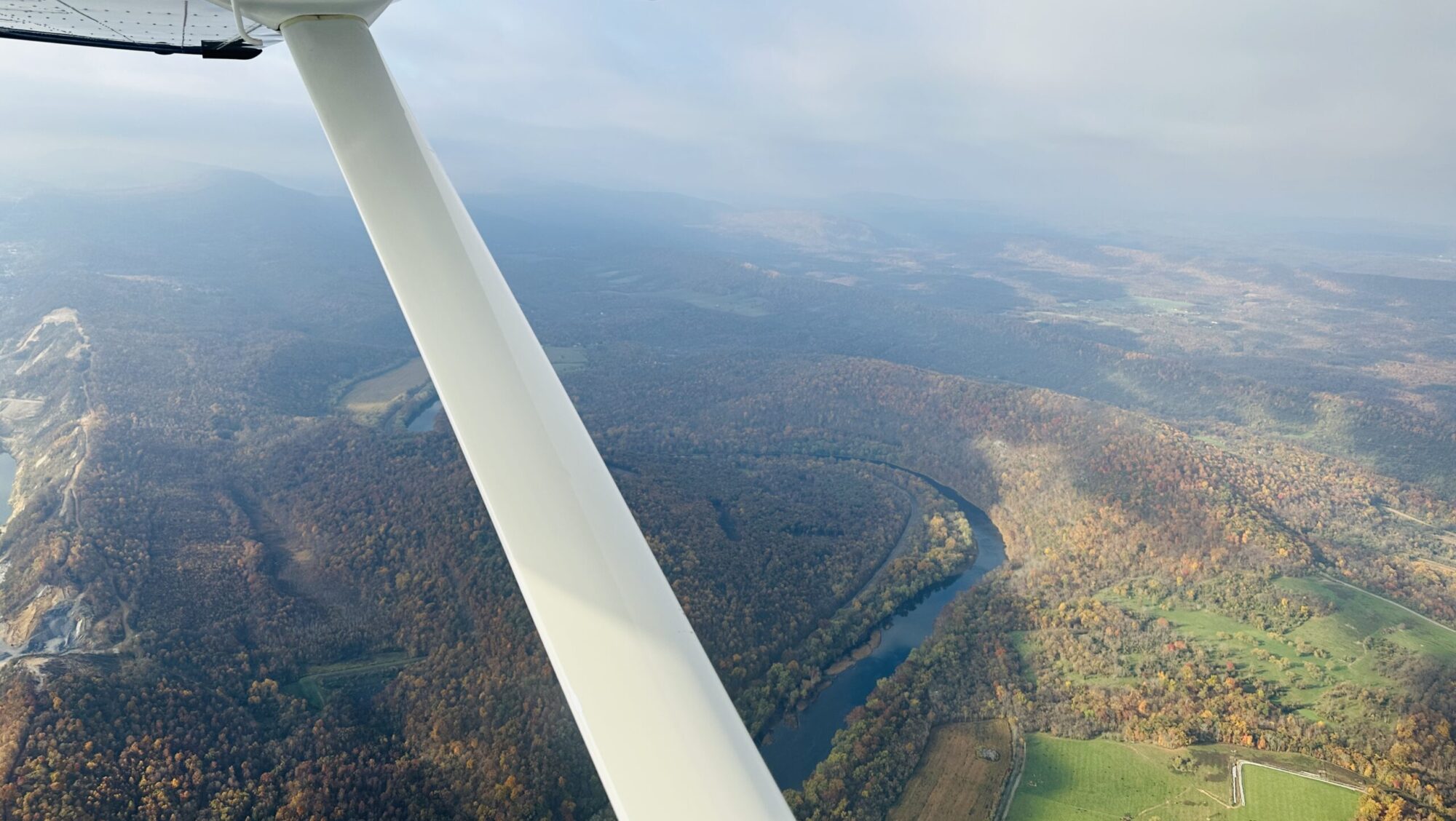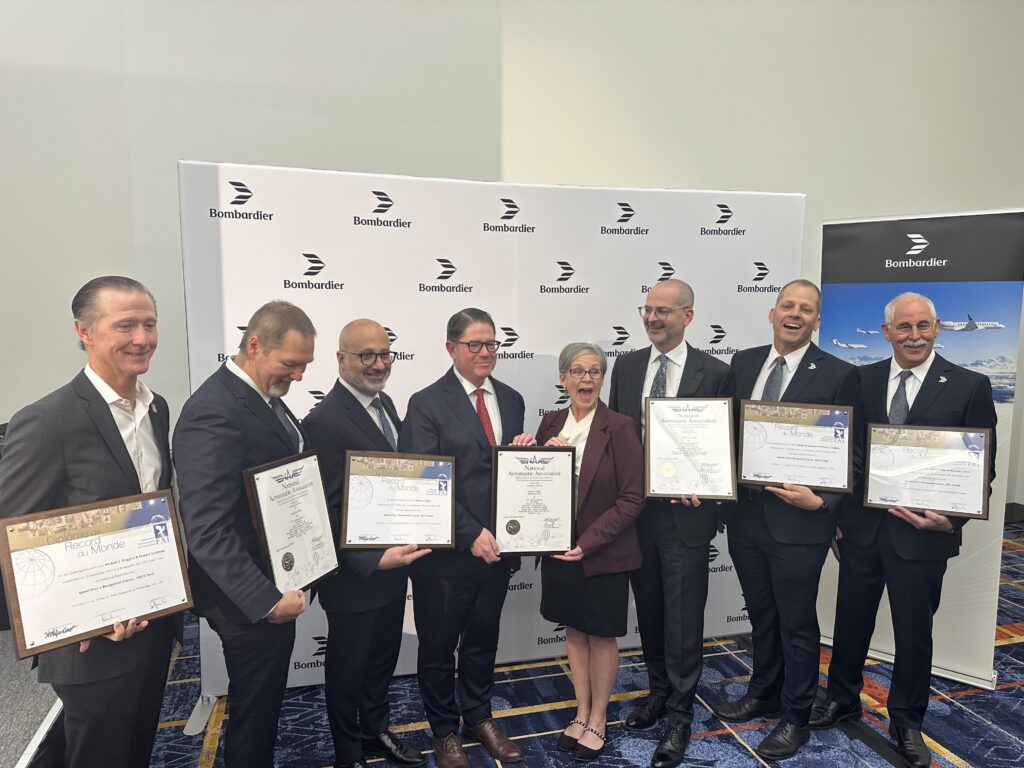My third day at NBAA BACE this year kicked off with a visit to our friends at Garmin, who have been basking in the post-release afterglow following the launch of the G3000 Prime flight deck. The avionics giant had an AATD-style sim set up in a conference room at their exhibit in the main hall, and they were gracious enough to give me a thorough demo on their latest product, which combines functionality and style from the G1000 Nxi, G3000, and G3X Touch set-ups.
The launch platform for the G3000 Prime is the Cessna Citation CJ4 Gen3 announced on Monday, but the sim had been set up to be a fairly generic jet—though it bears more than passing resemblance to a 525 series.
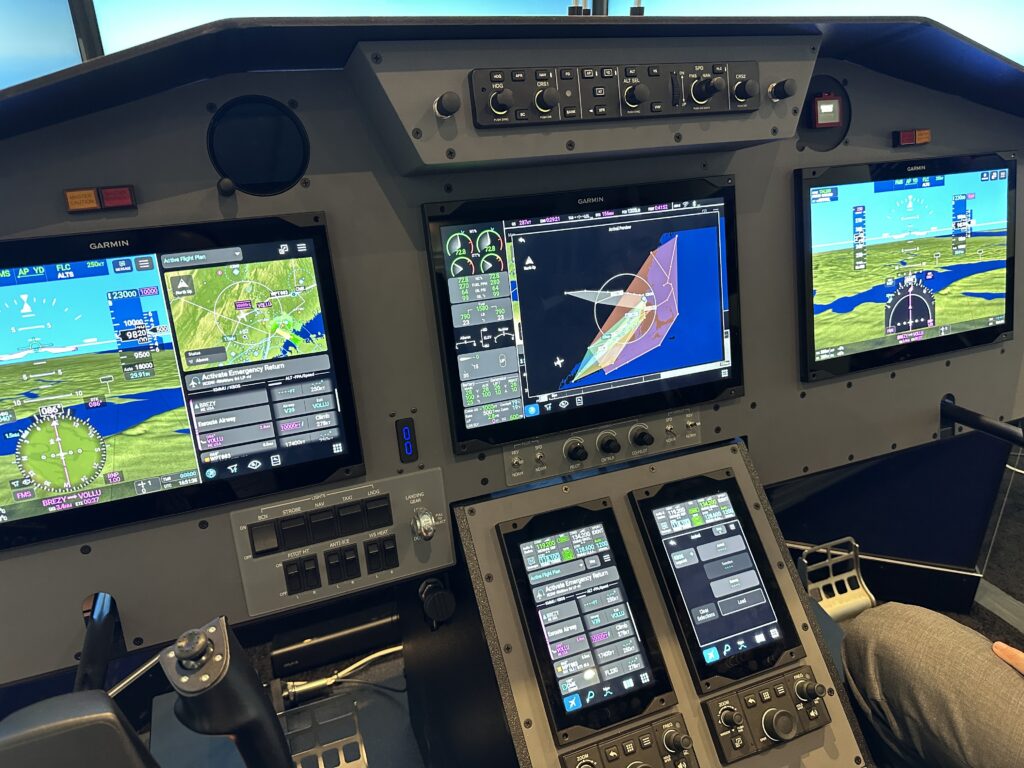
In this initial application, the flight deck consists of a three-screen set of large 14-inch primary flight displays (PDUs), and two smaller (7-inch) portrait-oriented secondary displays (or SDUs). But rather than having data entry only available on the SDUs (they are positioned similarly to the touchscreen controllers in the G3000), the pilot can enter data there or directly on the PDU. Fields available for data entry are highlighted, and the pilot can swipe down menus from the top bar to edit those fields directly—I almost applauded when I saw that, thinking back on how frustrating it can be when you get in an airplane and those aren’t to your liking.
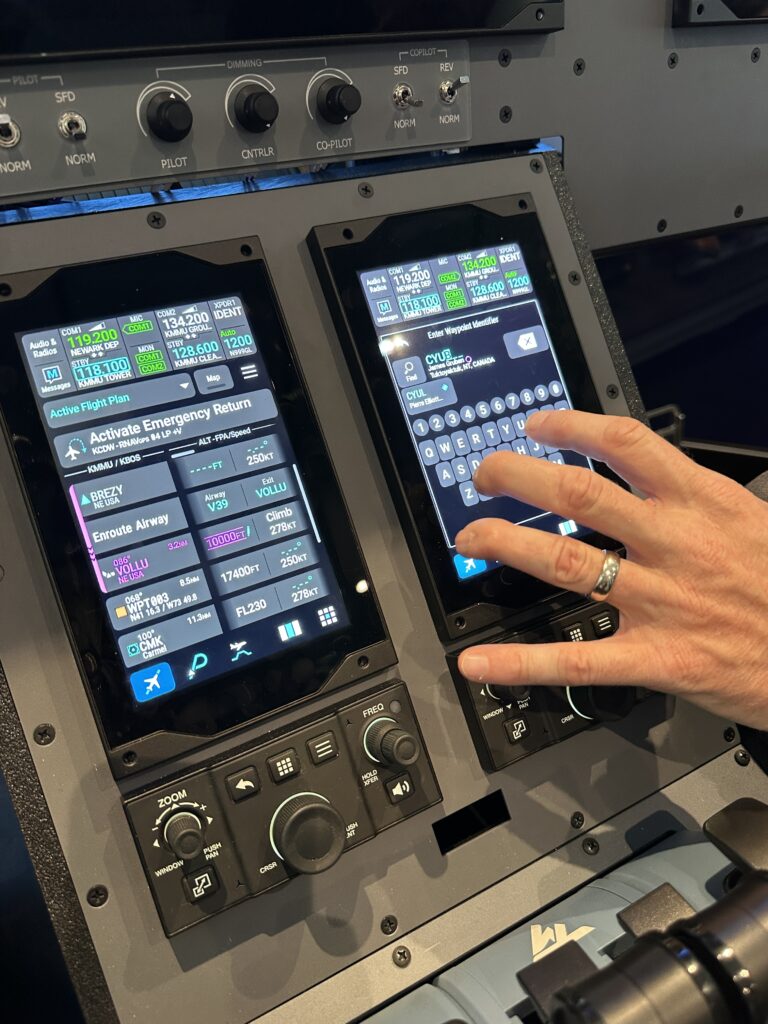
The “touch” itself has improved too, with fingerprint resistant displays and a unique multi-touch tech allowing you to brace your hand directly on the screen for stability while you enter or select the field you want to change or activate. Certain menu buttons (like the Flight Plan) remain available along the bottom of the main displays regardless of what is active on the screen, and the SDUs double as standby electronic flight instruments, with their ability to display PFD and map data in the event of a main screen failure.
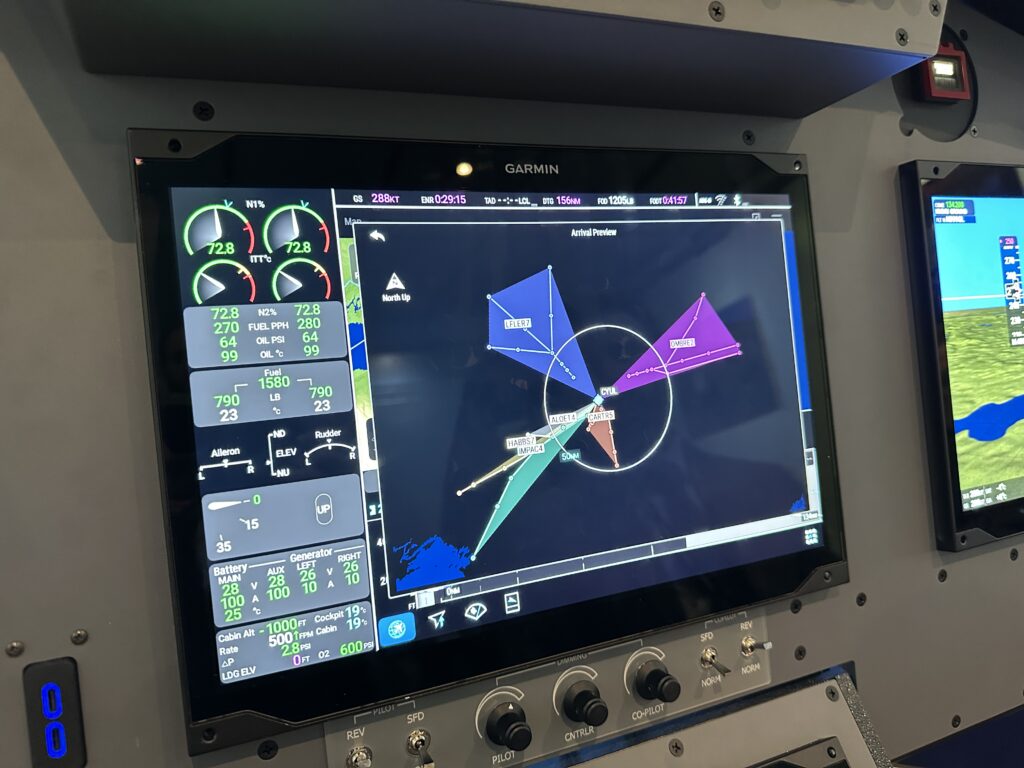
One very cool feature: The pilot can try out a new routing or alternate on the SDU, and generate a visual depiction of it without loading it as an active flight plan. While it has clear safety and situational awareness implications, I also see it as a way to stave off boredom on long legs—you can check out new places to your heart’s delight.
Safety updates abound in the system, beyond emergency Autoland—which has itself seen an upgrade to take NOTAMs into account. One timely feature added is the Runway Occupancy Awareness technology, which analyzes GPS and ADS-B data to determine if the runway ahead has another airplane, or if one is about to land on top of you. I honestly had the heebie-jeebies watching the simulation of it—these are those moments that strike fear in the hearts of pilots.
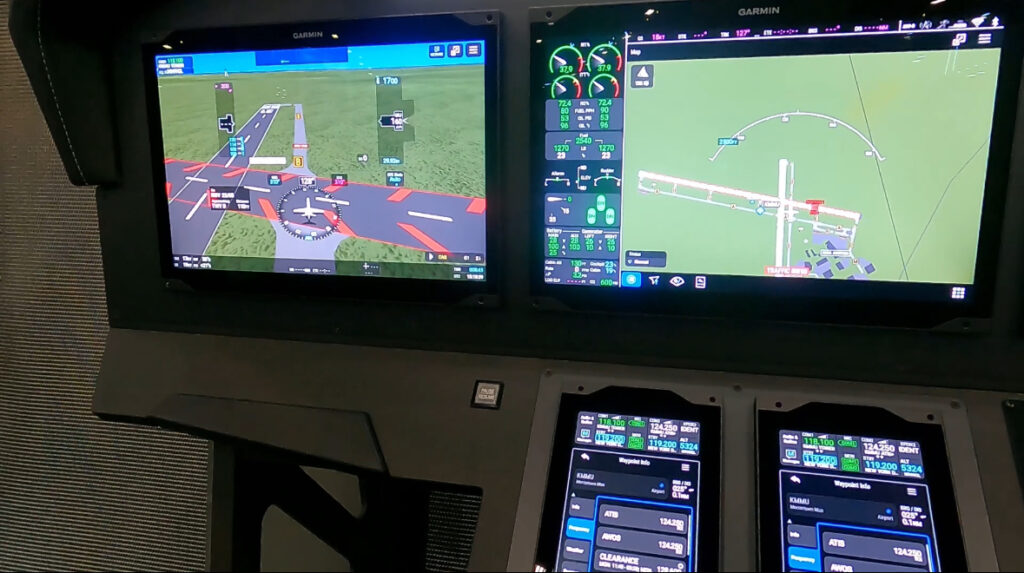
Smart checklists also link to CAS messages, streamlining access to abnormal and emergency procedures with contextual flows. Smart Glide and Smart Rudder Bias come too, along with the Emergency Stability Protection that rounds out Garmin’s Autonomi suite. The Emergency Return function allows you to select a departure alternate close by and set up the runway and landing information ahead of time, so that in the event of a problem that precludes returning to the runway you just left, you already have that locked and loaded.
While it’s still under development in its first application, the G3000 Prime feels fully baked, and I look forward to flying with the system once it’s past certification.
